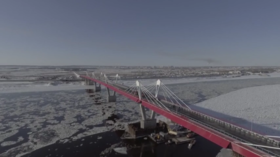US shale collapse will lead to higher oil prices
US shale growth is about to decline, becoming an immediate victim of the Saudi-Russian price war.
Saudi Aramco said that it would increase oil production to 12.3 million barrels per day (mb/d) in April, a shocking escalation of the war for market share. That level of output is believed to be beyond what Aramco can produce on a sustainable basis. In other words, Saudi Arabia is going all-out to flood the market.
Also, Saudi energy minister Prince Abdulaziz bin Salman didn’t sound interested in meeting with Russia anytime soon. “I fail to see the wisdom for holding meetings in May-June that would only demonstrate our failure in attending to what we should have done in a crisis like this and taking the necessary measures,” Prince Abdulaziz told Reuters.
According to Energy Intelligence, Saudi Arabia is conducting budgeting exercises to game out scenarios in which oil crashes to between $12 to $20 per barrel, and will even look at an extreme scenario in which oil falls below $10.
Russia says it can withstand the price war at $25 to $30 per barrel for 6 to 10 years. Neither side appears willing to budge.
“Monday will go down as one of the bleakest market days in the history of the energy sector,” Raymond James wrote in a note. “Was this capitulation day? It certainly feels like it... it is hard to imagine how much worse sentiment can get.”
As a result, the immediate victim will be US shale. “[O]il should bottom out when producers begin physically shutting in wells, which is indeed what set the floor four years ago,” the investment bank added.
The reaction was swift. With share prices in freefall, the number of shale companies announcing budget cuts multiplied at the start of the week. Diamondback Energy and Parsley Energy immediately announced plans to cut spending and reduce drilling activity.
Canadian oil company Cenovus Energy slashed 2020 capex by 32 percent and its production guidance by 5 percent. Ovintiv said it would cut spending and tried to reassure skittish investors that it had enough liquidity. Marathon Oil cut spending by $500 million.
Also on rt.com GOLD may be the BIG WINNER in oil price warEven Chevron admitted that it might need to cut spending, just days after it unveiled lofty goals on free cash flow over the next five years. “We are reviewing alternatives to reduce capital expenditures, that are expected to lower short-term production and preserve long-term value,” Chevron said in a statement to Reuters late on Monday. Chevron was the first oil major to suggest that it might cut spending, and the oil giant said that it needs $55 per barrel in order to cover its spending and shareholder payouts.
At these prices almost no shale well drilled today can make money. Rystad Energy says just a handful of companies have breakevens lower than today’s oil price. Friezo Loughrey of data firm Oil Well Partners LLC told Bloomberg that Permian breakevens are closer to $68 per barrel if investors want an adequate return within 24 months. Today, prices are trading at half of that.
“Many US fracking companies already had their backs to the wall before the price slump due to high debts and financing difficulties,” Commerzbank wrote in a note. “Drilling activity declined continuously until mid-January, and has since stagnated at a low level.”
The one-two combo of the coronavirus pandemic and the Saudi-Russia price war could deliver a knockout blow to US shale.
But perspectives on the impact on production vary. JBC Energy said that they “prefer a more cautious call on US supply declines,” adding that it may take a few months before production begins to fall.
But others see an immediate retreat. “A decline in US shale oil production of 1-2m bl/day from current total US oil production of 13.1m bl/day is natural to expect,” Bjarne Schieldrop, chief commodities analyst at SEB, said in a statement. “We now think that a last-minute deal between Russia and OPEC before the expiry of the current cuts at the end of March 2020 is very unlikely. Russia has probably firmly decided that now is the time to pull away the rug from under the feet of the shale oil producers, so now is the time for the second shale oil reset.”
This article was originally published on Oilprice.com

















